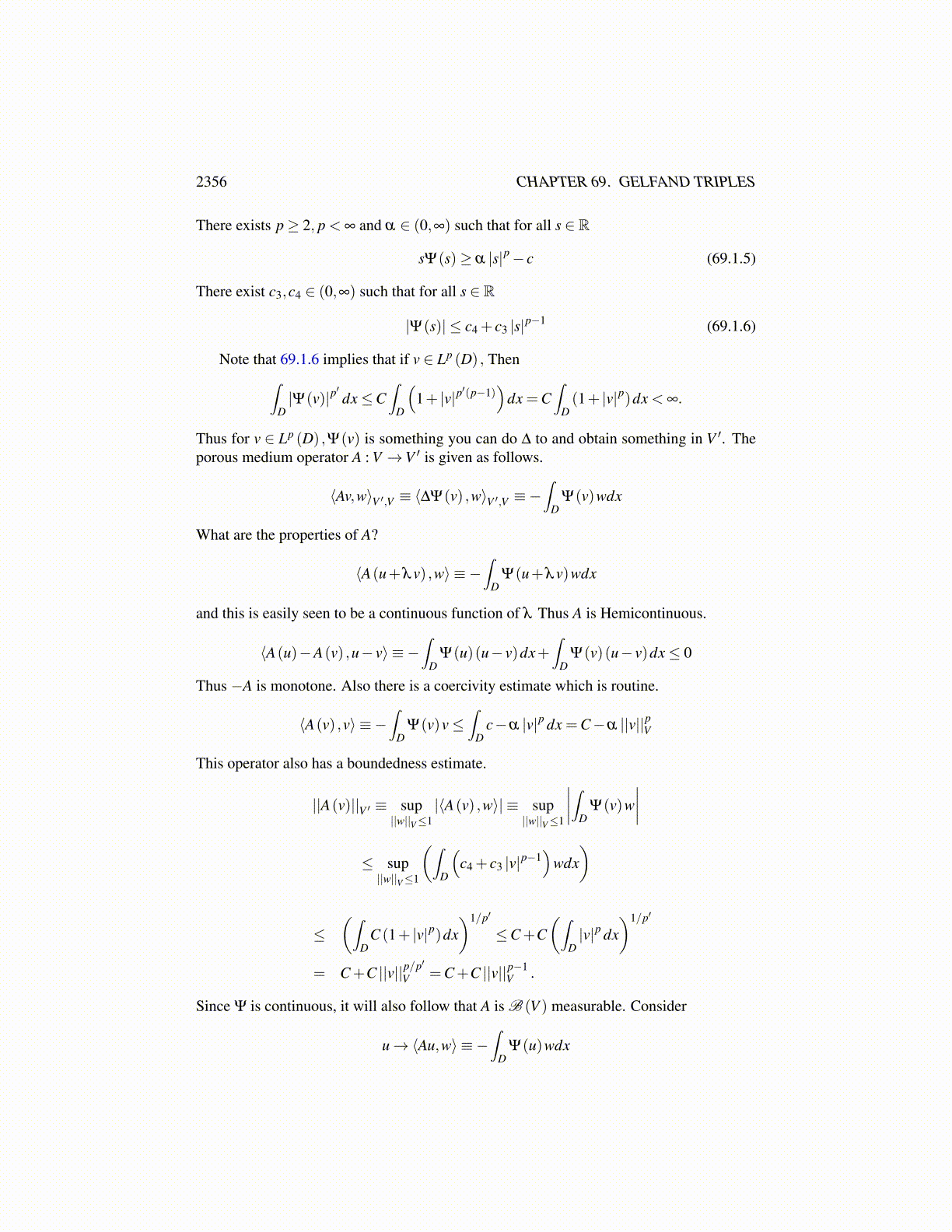
2356 CHAPTER 69. GELFAND TRIPLES
The following is about the Gelfand triple
V = Lp (D)⊆(H1
0)′ ⊆ (Lp (D))′
Lemma 69.1.1 It is possible to consider Lp (D)≡V as a dense subspace of(H1
0)′ ≡H as
follows. For f ∈ Lp (D) and φ ∈ H10 (D) ,
⟨ f ,φ⟩ ≡∫
Df (x)φ (x)dx
One can also consider H ≡(H1
0)′ as a dense subspace of (Lp (D))′ ≡ V ′ as follows. For
−∆φ ∈ H and f ∈ Lp (D) ,
⟨−∆φ , f ⟩ ≡ (−∆φ , f )H ≡ ⟨ f ,φ⟩
−∆ maps H10 (D) to H ≡
(H1
0)′ ⊆V ′.−∆ can be extended to yield a map−∆1 from Lp′ (D)
to V ′.
H10 (D)
−∆→(H1
0)′
Lp′ (D) =V−∆1→ V ′
Proof: First of all, note that by 69.1.1
|⟨ f ,φ⟩| ≤ || f ||Lp ||φ ||Lp′ ≤C || f ||Lp ||φ ||H10
and so it is certainly possible to consider Lp ⊆ H ≡(H1
0)′ as just claimed. Now why
can Lp (D) be considered dense in H ≡(H1
0)′? If it isn’t dense, then there exists ψ ∈
H10 (D) ,ψ ̸= 0 such that
(−∆ψ, f )H = 0
for all f ∈ Lp (D) . However, the above would say that for all f ∈ Lp,
(−∆ψ, f )H ≡ ⟨ f ,ψ⟩ ≡∫
Df ψ = 0
But ψ ∈ Lp′ (D) because H10 (D) embedds continuously into Lp′ (D) and so the above hold-
ing for all f ∈ Lp (D) implies by the usual Riesz representation theorem that ψ = 0 contraryto the way ψ was chosen.
Now consider the next claim. For −∆φ ∈ H ≡(H1
0)′ and f ∈ Lp (D) and from the first
part|⟨−∆φ , f ⟩| ≡ |(−∆φ , f )H | ≡ |⟨ f ,φ⟩| ≤C || f ||Lp ||φ ||H1
0 (D)
Thus −∆φ ∈ H can be considered in (Lp (D))′ . Why should H be dense in (Lp (D))′? If itis not dense, then there exists g∗ ∈ (Lp (D))′ which is not the limit of vectors of H. Then